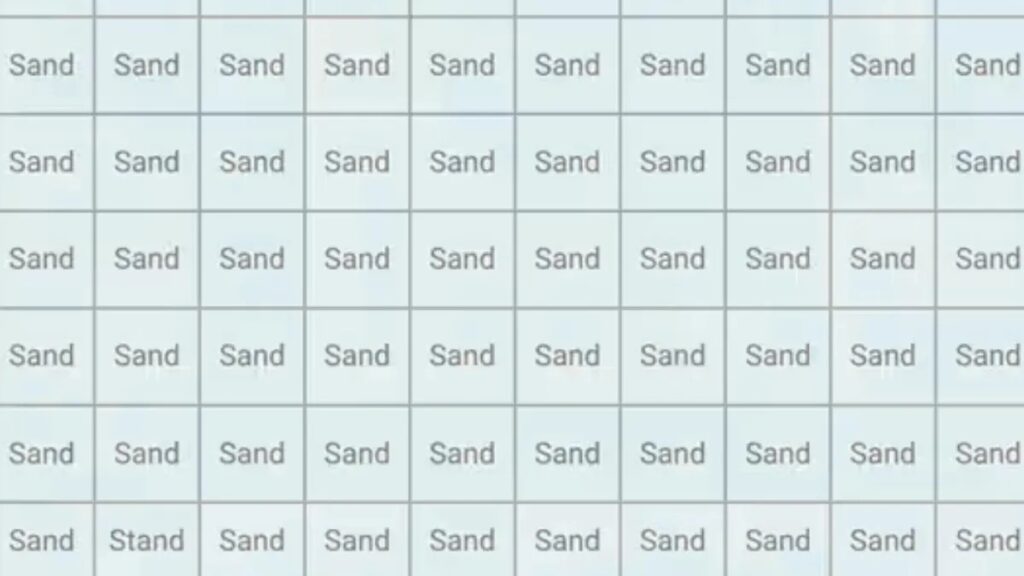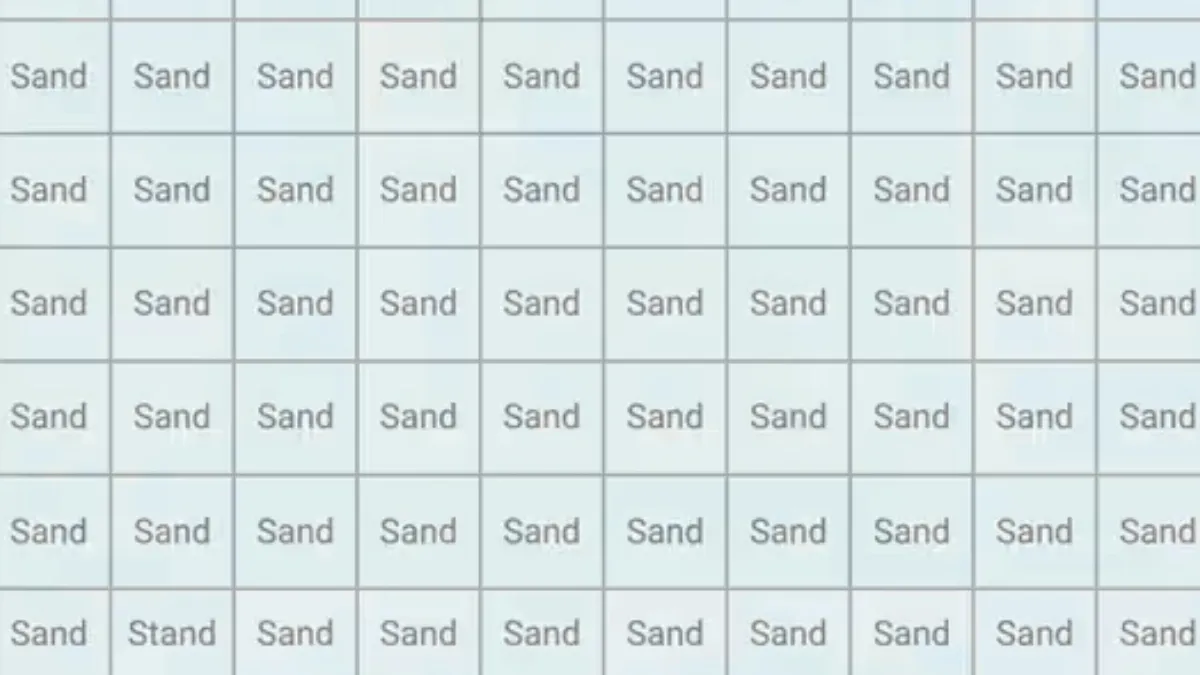If you possess 140+ IQ Level, Then Find the Hidden Parrot in this Beautiful Artwork Optical Illusion
Think you have a 140+ IQ and sharp 20/20 vision? Test your brainpower with this clever optical illusion! Hidden in a charming artwork featuring a young woman and her dog lies a parrot camouflaged in plain sight. Spot it within 9 seconds to prove your genius-level observation skills!

Find the Hidden Parrot in this Beautiful Artwork Optical Illusion
An optical illusion is a visual phenomenon where the brain misinterprets what the eyes perceive, creating a false or misleading impression of reality. This occurs because the brain processes visual information by drawing on past experiences, context, and patterns, which can sometimes lead to incorrect conclusions. Optical illusions can occur due to factors like perspective, light, colour, movement, or the arrangement of shapes. They are generally classified into three types: literal illusions (images that differ from the objects creating them), physiological illusions (effects resulting from prolonged eye stimulation), and cognitive illusions (misinterpretations based on assumptions). Optical illusions are widely used in art, architecture, psychology, and neuroscience to study perception, attention, and how the human brain interprets the world. They reveal that seeing isn’t always believing.
Are you ready for this optical illusion test? Today’s optical illusion is cleverly designed to test your perception. The image appears to be an illustrated scene featuring a young woman and a white dog in an outdoor setting, possibly a garden or picnic spot.
The challenge is to find the Hidden Parrot in this beautiful Artwork of this Optical Illusion.
Can you prove you have an IQ level of 140 or higher with 20/20 vision? Then, using your Super-Vision Eye Skill with 140+ IQ Level, find the Hidden Parrot in this beautiful Artwork of this Optical Illusion—within just 9 seconds!
Aug 16, 2025, 23:00 IST

Find the Hidden Parrot in this Beautiful Artwork Optical Illusion
ADVERTISEMENT
An optical illusion is a visual phenomenon where the brain misinterprets what the eyes perceive, creating a false or misleading impression of reality. This occurs because the brain processes visual information by drawing on past experiences, context, and patterns, which can sometimes lead to incorrect conclusions. Optical illusions can occur due to factors like perspective, light, colour, movement, or the arrangement of shapes. They are generally classified into three types: literal illusions (images that differ from the objects creating them), physiological illusions (effects resulting from prolonged eye stimulation), and cognitive illusions (misinterpretations based on assumptions). Optical illusions are widely used in art, architecture, psychology, and neuroscience to study perception, attention, and how the human brain interprets the world. They reveal that seeing isn’t always believing.
Related Stories
- Using Your HD-Eye Vision with 20/20 Eye-Sight, Find the Hidden Macaw in this beautiful Artwork Optical Illusion
- Optical Illusion: Hey parrot lovers! Here is a challenge for you. Can you spot the hidden parrot?
- Optical Illusion: Dive into this beautiful scenic beauty while you find the hidden parrot!
Are you ready for this optical illusion test? Today’s optical illusion is cleverly designed to test your perception. The image appears to be an illustrated scene featuring a young woman and a white dog in an outdoor setting, possibly a garden or picnic spot.
The challenge is to find the Hidden Parrot in this beautiful Artwork of this Optical Illusion.
Can you prove you have an IQ level of 140 or higher with 20/20 vision? Then, using your Super-Vision Eye Skill with 140+ IQ Level, find the Hidden Parrot in this beautiful Artwork of this Optical Illusion—within just 9 seconds!
Using Your HD-Eye Vision with 20/20 Eye-Sight, Find the Hidden Parrot in this beautiful Artwork Optical Illusion
At first glance, the artwork appears to be a heartwarming scene of a young woman crouching beside her loyal white dog in a garden-like setting, surrounded by everyday objects. There’s a many objects are can be seen in the image.
But hidden somewhere in this vibrant composition is a Parrot—blending seamlessly into the background.
Your challenge? Use your HD-eye vision to locate the hidden parrot without scrolling away or asking for hints.
So if you think that your IQ is higher than 100% of people, then by using your sharp Hawk-Eye Vision and observation skills and also using your 140+ IQ level, could you find the Hidden Parrot in this beautiful Artwork Optical Illusion in 9 seconds?
I think you all have now received a brief overview of the image, and you can now start your brain teaser challenge.
So, almost ready!
Then set the timer on your clock for 9 seconds
Ready… Get… Set… Go…
Yes, observe the image very carefully.
Use your sharp IQ skills.
Hurry up! Time is ending…
3…2…1… Stop! Stop! Time’s Up!
So, how was the challenge? Okay, congratulations to those who could have found the Hidden Parrot in this beautiful Artwork Optical Illusion in 9 seconds; you all are geniuses, and you all possess Einstein-level 140+ IQ and vigilant-eye vision, and obviously, you are in the 1% of people who can solve this visual brain teaser. Okay, now those who were not able to find the Hidden Parrot in this beautiful Artwork Optical Illusion in 9 seconds, they also do not worry. Do practice these puzzles and brain teasers, and your IQ level, thinking skills, and problem-solving skills will be increased.
Solution for this beautiful Artwork Optical Illusion Challenge: Where is the Parrot hidden?
So, are you excited to know where the Parrot is hidden in this beautiful Artwork Optical Illusion?
Okay, first, look carefully at the image. Now look at the right side, top corner, near the small green plants, the Parrot is hidden, and if still not found, the Parrot, look down in the image, it is circled in the image.
So, now you all know where the Parrot is hidden in this beautiful Artwork Optical Illusion test, and by solving this optical illusion challenge, you all have enjoyed it.
By practising these types of puzzles, your IQ will increase, and so will your observation and problem-solving skills.

An optical illusion is a type of puzzle that creates a visual phenomenon where the brain perceives an image differently from its actual reality. These types of illusion make it happen because our eyes capture light and patterns, but the brain interprets them based on prior experiences, expectations, and context. Sometimes, these types of optical illusion can create visual information incomplete or ambiguous, leading the brain to “fill in” gaps, which creates false or distorted perceptions. These optical illusions can be asked in various patterns of questions that may be of different shapes, colours, patterns, or perspectives that trick the mind. These optical illusions can be classified into three types: literal illusions, physiological illusions, and cognitive illusions.
Are you ready for this optical illusion test? Today’s optical illusion is cleverly designed to test your perception and observation skills. The image appears to be a series pattern in the close box format, in which you can easily see the repeating pattern series of “61”.
Test your observation skills with this tricky word puzzle brain teaser! Spot the hidden word “Stand” among the “Sand” sequence in just 8 seconds to prove your sharp IQ and lightning-fast pattern recognition skills.

Find the Word “Stand” in this Word Puzzle Brain Teaser
Word puzzles are a type of optical illusion brain teaser puzzle which makes challenges language skills by asking you to spot patterns, rearrange letters, or decode clues to form words. These puzzles are of some common types, which include anagrams, crosswords, word ladders, and cryptograms. By solving these types of brain teasers, make relies on vocabulary, pattern recognition, and logical deduction: look for prefixes, suffixes, repeated letters, letter-frequency patterns, and plausible word shapes. These types of optical cum brain teasers are used to first break problems into smaller steps, test options quickly, and use the process of elimination. Time yourself to build speed, but focus on accuracy during practice. These puzzles enhance memory, verbal fluency, and problem-solving skills, making them effective warm-ups for exams or creative thinking exercises. By practising regularly, these types of optical illusion cum brain teaser puzzles expand your vocabulary and train your brain to recognise language shortcuts more quickly. Try them daily to notice steady improvement and sharper thinking.
So, are you ready to take the challenge? Okay, before starting the challenge, let’s briefly review the image. This image is a fun visual brain teaser puzzle with a given sequence of “Sand” puzzles. At first glance, they all look very similar. But there’s a hidden “Stand,” which is an odd word among the “Sand” series word Puzzle. The challenge is to find the odd word “Stand” among the “Sand” sequence series Word puzzle Brain Teaser. So, are you ready to check your super-visionary eye-skill? Then, find the word “Stand” in this word puzzle brain teaser of “Sand” in just 8 seconds.
Are You Ready to Check Your Super-Visionary Eye-Skill? Then, Find the Word “Stand” in this Word Puzzle Brain Teaser
Test your observation skills with this tricky word puzzle brain teaser! Spot the hidden word “Stand” among the “Sand” sequence in just 8 seconds to prove your sharp IQ and lightning-fast pattern recognition skills.


Find the Word “Stand” in this Word Puzzle Brain Teaser
Word puzzles are a type of optical illusion brain teaser puzzle which makes challenges language skills by asking you to spot patterns, rearrange letters, or decode clues to form words. These puzzles are of some common types, which include anagrams, crosswords, word ladders, and cryptograms. By solving these types of brain teasers, make relies on vocabulary, pattern recognition, and logical deduction: look for prefixes, suffixes, repeated letters, letter-frequency patterns, and plausible word shapes. These types of optical cum brain teasers are used to first break problems into smaller steps, test options quickly, and use the process of elimination. Time yourself to build speed, but focus on accuracy during practice. These puzzles enhance memory, verbal fluency, and problem-solving skills, making them effective warm-ups for exams or creative thinking exercises. By practising regularly, these types of optical illusion cum brain teaser puzzles expand your vocabulary and train your brain to recognise language shortcuts more quickly. Try them daily to notice steady improvement and sharper thinking.PauseMute
Remaining Time -10:15
https://imasdk.googleapis.com/js/core/bridge3.714.1_en.html#fid=goog_886342646Close Player
Related Stories
- Using Your Super-Eye Skill with 143+ IQ Level, Find Out the Animal-Related Hidden Word in this Geometrical Optical Illusion
- If You Possess A 140+ IQ Level, Then Find the Word That Does Not Fit In the Sea Word Puzzle
- If You Possess a 200+ IQ Level, Then Find The “CAT” Word in Letter Jumbled Sequence Series
Today’s challenging puzzle is to find the odd word “Stand” among the “Sand” sequence series. So, are you ready to check your super-visionary eye-skill? Then, find the word “Stand” in this word puzzle brain teaser of “Sand” in just 8 seconds.
Are You Ready to Check Your Super-Visionary Eye-Skill? Then, find the Word “Stand” in this Word Puzzle Brain Teaser
So, are you ready to take the challenge? Okay, before starting the challenge, let’s briefly review the image. This image is a fun visual brain teaser puzzle with a given sequence of “Sand” puzzles. At first glance, they all look very similar. But there’s a hidden “Stand,” which is an odd word among the “Sand” series word Puzzle. The challenge is to find the odd word “Stand” among the “Sand” sequence series Word puzzle Brain Teaser. So, are you ready to check your super-visionary eye-skill? Then, find the word “Stand” in this word puzzle brain teaser of “Sand” in just 8 seconds.
I think you all have now received a brief overview of the image, and you can now start your brain teaser challenge.
So, almost ready!
Then set the timer on your clock for 8 seconds
Ready… Get… Set… Go…
Yes, observe the image very carefully.
Use your sharp IQ skills.
Hurry up! Time is ending…
3…2…1… Stop! Stop! Time’s Up!
So, how was the challenge? Okay, congratulations to those who could have spotted the odd word “Stand” among the “Sand” sequence series word puzzle brain teaser in just 8 seconds; you all are geniuses, and you all possess sharp intellectual IQs with 140+ IQ levels, and obviously, you are in the 1% of people who can solve this visual brain teaser. Okay, now those who were not able to spot the odd word “Stand” among the “Sand” sequence series, they also do not worry. Do practice these puzzles and brain teasers, and your IQ level, thinking skills, and problem-solving skills will be increased.
Solution for this brain teaser: Where is the odd Word “Stand” hidden in the sequence of the “Sand” series?
So, are you excited to know where the odd word “Stand” is hidden in the sequence of the “Sand” series? Okay, first look carefully at the image; look closely at the last row of the bottom and move to the 2nd number from the left. So, here, the odd word “Stand” is hidden among the “Sand” sequence series.
So, now you all know where the odd word “Stand” is hidden in the sequence of the “Sad” series, and by solving this brain teaser, you all have enjoyed it.
By practising these types of puzzles, your IQ will increase, and your observation skills, problem-solving skills, thinking skills, and analytical skills will improve.
Test your IQ with this tricky circle-based math riddle that challenges your logic, observation, and problem-solving skills. Only the top 1% can solve it in 17 seconds—can you crack the pattern and find the answer?
A math riddle is a type of logical reasoning brain teaser puzzle that combines different numbers, logic, and creative thinking to find a hidden answer, which is given in a different pattern. These types of maths riddle brain teasers are not straightforward types of math questions; rather than these riddles often present the question in a tricky or playful way, requiring you to think beyond standard formulas. In these types of maths riddle brain teasers, it has beeb widely used different patterns, sequences, wordplay, or hidden clues to challenge your reasoning skills, thinking skills, or problem-solving skills. Solving these types of math riddles involves careful reading of the problem, identifying key information, spotting patterns, and applying basic arithmetic or advanced concepts depending on difficulty. For example: “I am a three-digit number. My tens digit is five more than my ones digit, and my hundreds digit is eight less than my tens digit. What am I?” Answer: 194. Math riddles sharpen problem-solving skills while making learning fun.
So, are you ready to take the challenge of the math riddle? Okay, before starting the challenge, let’s briefly review the circle-number question series given in the image. This image serves as a fun logical reasoning in a circle-series pattern.
In today’s math riddle challenge, it will be your test of your perception with mental capacity to solve these types of circle-series patterns. In the image, you can see in the first circle, given 3,8,7,2 and in the middle, the answer comes 5. Same in the second circle, you all can see, there are given 6,4,8,5,7, and the answer comes 6.
Those who possess an Einstein-level IQ Can Solve This Math Riddle Circle-Based Puzzle in just 17 Seconds
Test your IQ with this tricky circle-based math riddle that challenges your logic, observation, and problem-solving skills. Only the top 1% can solve it in 17 seconds—can you crack the pattern and find the answer?

Solve This Math Riddle Circle-Based Puzzle in just 17 Seconds
A math riddle is a type of logical reasoning brain teaser puzzle that combines different numbers, logic, and creative thinking to find a hidden answer, which is given in a different pattern. These types of maths riddle brain teasers are not straightforward types of math questions; rather than these riddles often present the question in a tricky or playful way, requiring you to think beyond standard formulas. In these types of maths riddle brain teasers, it has beeb widely used different patterns, sequences, wordplay, or hidden clues to challenge your reasoning skills, thinking skills, or problem-solving skills. Solving these types of math riddles involves careful reading of the problem, identifying key information, spotting patterns, and applying basic arithmetic or advanced concepts depending on difficulty. For example: “I am a three-digit number. My tens digit is five more than my ones digit, and my hundreds digit is eight less than my tens digit. What am I?” Answer: 194. Math riddles sharpen problem-solving skills while making learning fun.
https://imasdk.googleapis.com/js/core/bridge3.714.1_en.html#fid=goog_1435727536
Are you ready for this math riddle test? Okay, in today’s math riddle, a series of circle-based numbers is given, which is used as logical arithmetical reasoning to test your mental ability. So, can you prove you’re in the 1% league with an Einstein-level IQ of 160 or higher? Then Solve This Math Riddle—within just 17 seconds!
Only with an Einstein-level IQ can you Solve This Math Riddle Circle-Based Puzzle in just 17 Seconds
So, are you ready to take the challenge of the math riddle? Okay, before starting the challenge, let’s briefly review the circle-number question series given in the image. This image serves as a fun logical reasoning in a circle-series pattern.
In today’s math riddle challenge, it will be your test of your perception with mental capacity to solve these types of circle-series patterns. In the image, you can see in the first circle, given 3,8,7,2 and in the middle, the answer comes 5. Same in the second circle, you all can see, there are given 6,4,8,5,7, and the answer comes 6.
Now, look at the last circle, there are given 7,8,9,7,8,9. So, what will come at the question mark?
So if you think that you’re in the 1% league with an IQ level of 160 or higher, try to Solve This Math Riddle in just 17 Seconds.
I think you all have now received a brief overview of the image, and you can now start your brain teaser challenge.
So, almost ready!
Then set the timer on your clock for 17 seconds
Ready… Get… Set… Go…
Yes, observe the image very carefully.
Use your sharp IQ skills.
Hurry up! Time is ending…
3…2…1… Stop! Stop! Time’s Up!
So, how was the challenge? Okay, congratulations to those who could have solved this math riddle in just 17 seconds; you all are geniuses, and you all possess an Einstein-level 160+ IQ and sharp mental capacity, and obviously, you are in the 1% of people who can solve this math riddle brain teaser. Okay, now those who were not able to solve this math riddle, they also do not worry. Do practice these puzzles and brain teasers, and your IQ level, thinking skills, and problem-solving skills will be increased.
Test your IQ with this tricky circle-based math riddle that challenges your logic, observation, and problem-solving skills. Only the top 1% can solve it in 17 seconds—can you crack the pattern and find the answer?

Solve This Math Riddle Circle-Based Puzzle in just 17 Seconds
A math riddle is a type of logical reasoning brain teaser puzzle that combines different numbers, logic, and creative thinking to find a hidden answer, which is given in a different pattern. These types of maths riddle brain teasers are not straightforward types of math questions; rather than these riddles often present the question in a tricky or playful way, requiring you to think beyond standard formulas. In these types of maths riddle brain teasers, it has beeb widely used different patterns, sequences, wordplay, or hidden clues to challenge your reasoning skills, thinking skills, or problem-solving skills. Solving these types of math riddles involves careful reading of the problem, identifying key information, spotting patterns, and applying basic arithmetic or advanced concepts depending on difficulty. For example: “I am a three-digit number. My tens digit is five more than my ones digit, and my hundreds digit is eight less than my tens digit. What am I?” Answer: 194. Math riddles sharpen problem-solving skills while making learning fun.
https://imasdk.googleapis.com/js/core/bridge3.714.1_en.html#fid=goog_1435727536
Are you ready for this math riddle test? Okay, in today’s math riddle, a series of circle-based numbers is given, which is used as logical arithmetical reasoning to test your mental ability. So, can you prove you’re in the 1% league with an Einstein-level IQ of 160 or higher? Then Solve This Math Riddle—within just 17 seconds!
Only with an Einstein-level IQ can you Solve This Math Riddle Circle-Based Puzzle in just 17 Seconds
So, are you ready to take the challenge of the math riddle? Okay, before starting the challenge, let’s briefly review the circle-number question series given in the image. This image serves as a fun logical reasoning in a circle-series pattern.
In today’s math riddle challenge, it will be your test of your perception with mental capacity to solve these types of circle-series patterns. In the image, you can see in the first circle, given 3,8,7,2 and in the middle, the answer comes 5. Same in the second circle, you all can see, there are given 6,4,8,5,7, and the answer comes 6.
Now, look at the last circle, there are given 7,8,9,7,8,9. So, what will come at the question mark?
So if you think that you’re in the 1% league with an IQ level of 160 or higher, try to Solve This Math Riddle in just 17 Seconds.
I think you all have now received a brief overview of the image, and you can now start your brain teaser challenge.
So, almost ready!
Then set the timer on your clock for 17 seconds
Ready… Get… Set… Go…
Yes, observe the image very carefully.
Use your sharp IQ skills.
Hurry up! Time is ending…
3…2…1… Stop! Stop! Time’s Up!
So, how was the challenge? Okay, congratulations to those who could have solved this math riddle in just 17 seconds; you all are geniuses, and you all possess an Einstein-level 160+ IQ and sharp mental capacity, and obviously, you are in the 1% of people who can solve this math riddle brain teaser. Okay, now those who were not able to solve this math riddle, they also do not worry. Do practice these puzzles and brain teasers, and your IQ level, thinking skills, and problem-solving skills will be increased.
Try This: Optical Illusion: Try to find the hidden Strawberry in the Cute Little Cow In Just 11 Seconds
Solution for this Math Riddle Circle-Based Puzzle
So, are you excited to know the answer to this Math Riddle Circle-Based Puzzle? The solution is given below:.
The number in the middle is the average of the numbers round the outside. So, 7+8+9+7+8+9 = 48, and 48/6 = 8
So, now you all know the answer to this Math Riddle Circle-Based Puzzle challenge, and by solving this radial optical illusion challenge, you all have enjoyed it.
By practising these types of puzzles, your IQ will increase, and so will your observation and problem-solving skills.